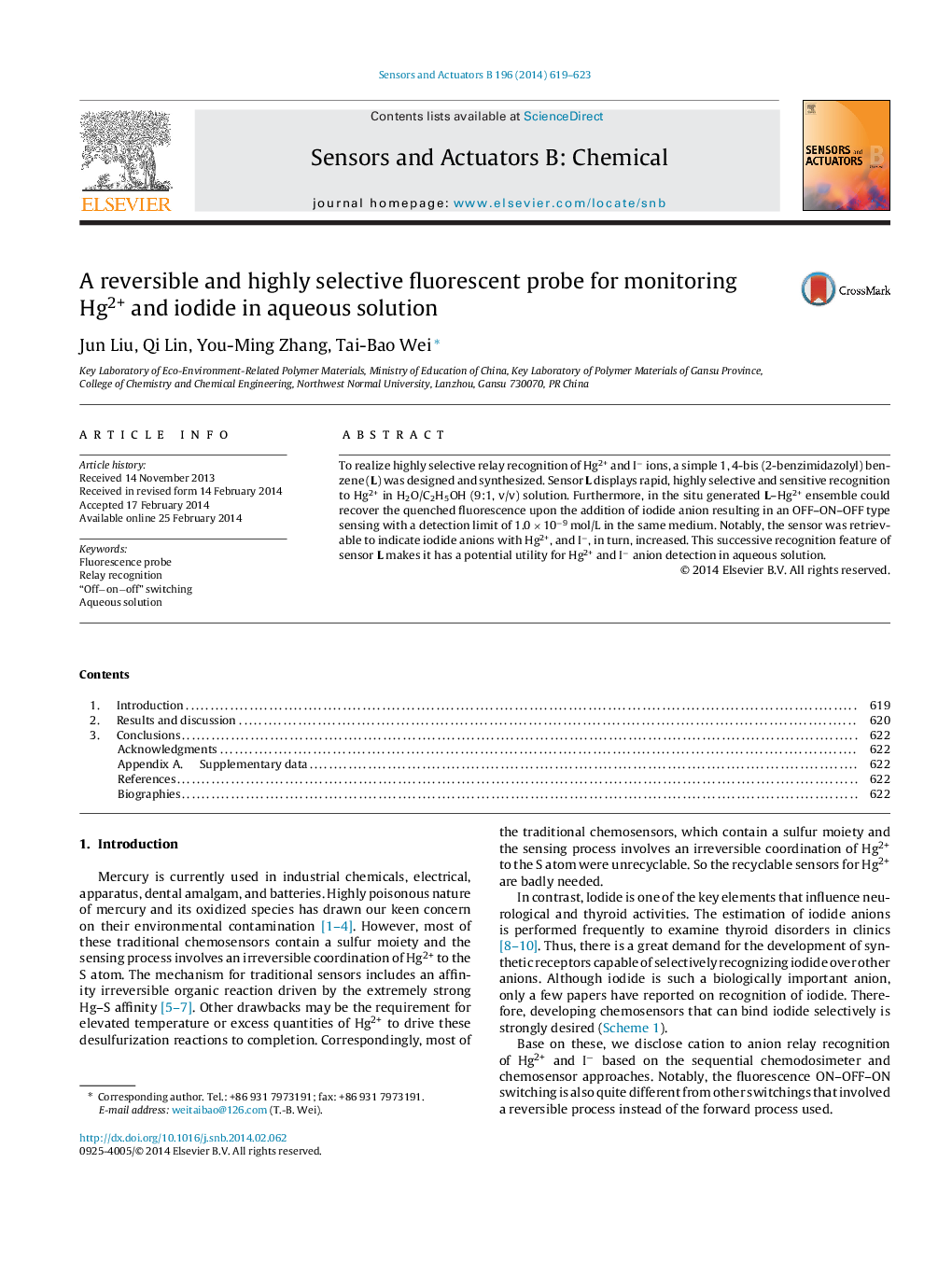| کد مقاله | کد نشریه | سال انتشار | مقاله انگلیسی | نسخه تمام متن |
|---|---|---|---|---|
| 750949 | 1462094 | 2014 | 5 صفحه PDF | دانلود رایگان |

• We have devised a fluorescence sensor L for sequential recognition of two ions (Hg2+ and I−) based on the displacement approach in aqueous media.
• We got “on–off–on” type (“Read–Erase–Write–Read” functions) fluorescence recognition system.
• A quite low detection limit (1.0 × 10−9 mol/L).
• L–Hg2+ displays high sensitivity, good reversibility for recognizing I− in aqueous system. This process was repeated several times without any loss of the emission intensity.
• The test strips were containing L were fabricated, which also shows a highly sensitively to Hg2+ and I−.
To realize highly selective relay recognition of Hg2+ and I− ions, a simple 1, 4-bis (2-benzimidazolyl) benzene (L) was designed and synthesized. Sensor L displays rapid, highly selective and sensitive recognition to Hg2+ in H2O/C2H5OH (9:1, v/v) solution. Furthermore, in the situ generated L–Hg2+ ensemble could recover the quenched fluorescence upon the addition of iodide anion resulting in an OFF–ON–OFF type sensing with a detection limit of 1.0 × 10−9 mol/L in the same medium. Notably, the sensor was retrievable to indicate iodide anions with Hg2+, and I−, in turn, increased. This successive recognition feature of sensor L makes it has a potential utility for Hg2+ and I− anion detection in aqueous solution.
A novel selective fluorescent chemosensor based on 1, 4-bis (2-benzimidazolyl) benzene (L) was synthesized and characterized. Once combined with Hg2+, it displayed high specificity for I− anion. It can display on–off-type fluorescence changed with high selectivity toward Hg2+ among 12 metal ions H2O solutions. Furthermore, in the situ generated L–Hg2+ ensemble could recover the quenched fluorescence upon the addition of I− anion resulting in a off–on-type sensing with a detection limit of micromolar range in the same medium.Figure optionsDownload as PowerPoint slide
Journal: Sensors and Actuators B: Chemical - Volume 196, June 2014, Pages 619–623